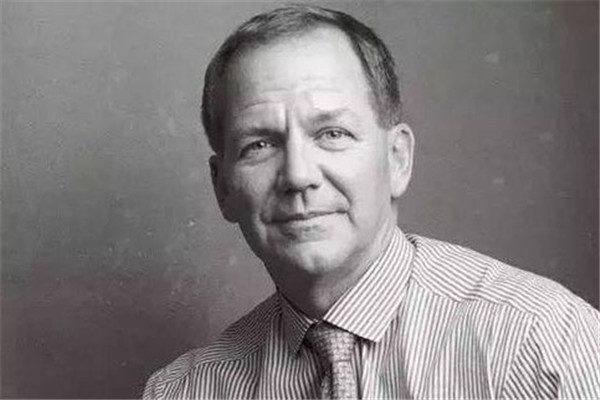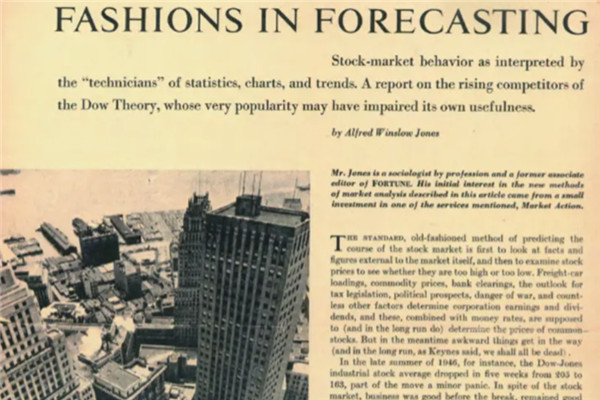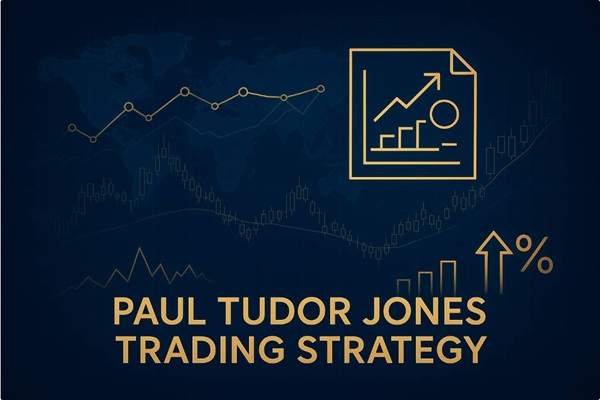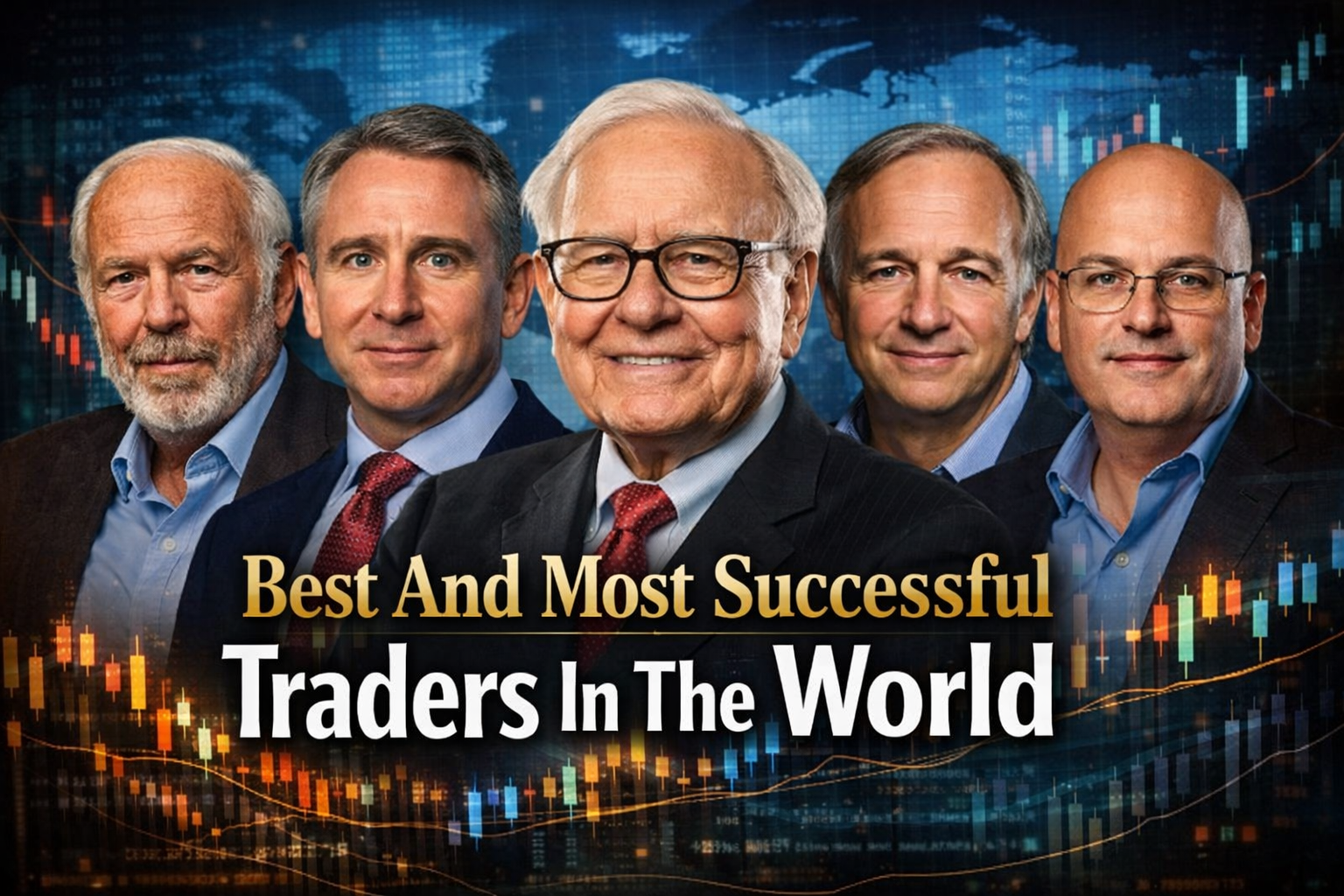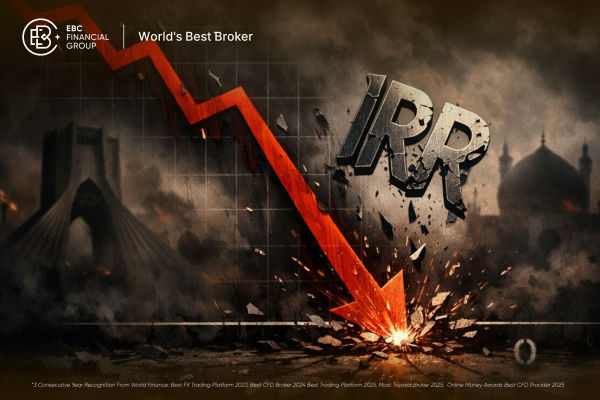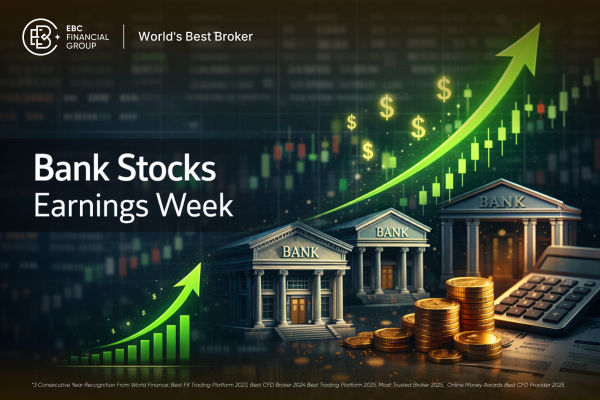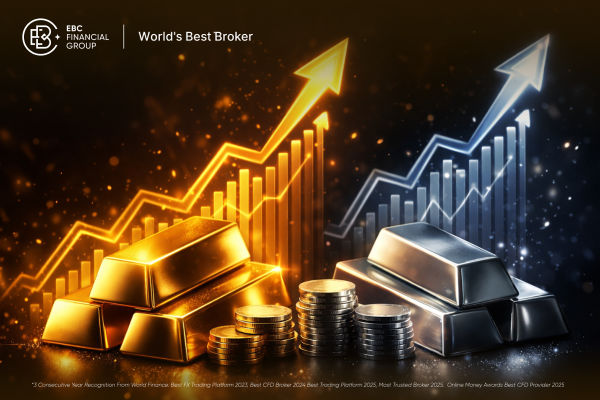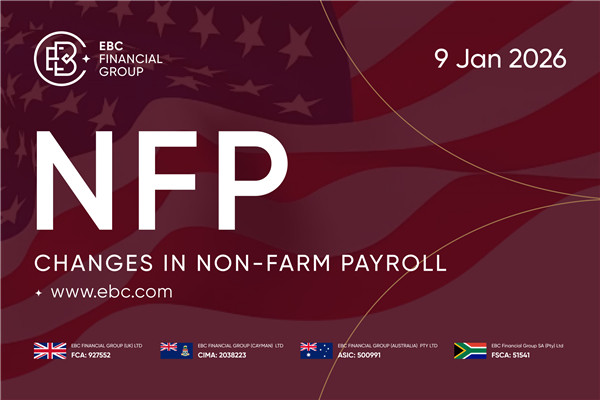Among Wall Street tycoons, Paul Tudor Jones can be considered somewhat unusual, unlike value investors such as Buffett. He believes that investing ultimately depends on trend charts and places great emphasis on technical analysis.
In 1984, he founded the Tudor Fund for 1.5 million yuan, and by the end of 1992, the total amount of the Tudor Fund had grown to $6 billion.
Since its establishment, the largest fund under the company has achieved an annualized return of 26%, and few hedge fund managers have achieved such robust high returns.
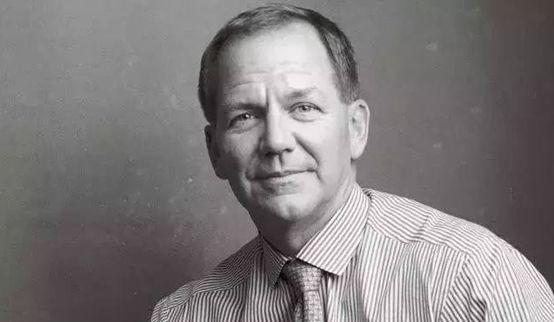
Paul Tudor Jones (born September 28, 1954, Tennessee, USA) is a Tudor Investment Founder of Corporation. In 2009, his personal estimated value was approximately $6.3 billion, and in March 2007, he was ranked 369th on the Forbes World's Richest List.
In 1980, Jones worked as an on-site trader on the New York Cotton Exchange and earned millions within a few years. In 1984, Jones left the exchange and founded the Tudor Fund, starting at 1.5 million yuan. Four years later, every $1000 invested in his fund has appreciated to over $1700. By the end of 1992, the total amount of Tudor Fund had grown to $6 billion,The current asset size under management has reached 10 billion US dollars.
Jones himself has a strong dual personality. In private occasions, he is quite easygoing, but during trading, he gives orders as if he were a fierce and brutal sergeant. He appears as a arrogant trader in the public eye, but privately he is an approachable, humble, and polite gentleman.
The mass media often focuses on his luxurious and flashy lifestyle: the luxurious mansion in Kishabik Bay, a 300 acre private wildlife sanctuary, beautiful women, and delicious food, but he also takes poverty alleviation as a sideline. Jones established a fund, following the example of New York businessman Yukinland, to support 85 students in the poorest Bradford - Straven borough of Brooklyn to complete their university education.
Jones not only donates money, but also meets regularly with students receiving relief every week. He recently founded the Robin Hood Foundation, which has a total of 5 million dollars so far. The foundation, as its name suggests, raises funds from the wealthy and then transfers them to civil society for the benefit of groups and the poor.
Continuously Growing in Failure
In October 1987, most investors in the world suffered heavy losses. In the same month, the Tudor Fund, managed by Paul Tudor Jones, received a 62% return. Jones' outstanding performance has been consistent. He has maintained triple digit growth for five consecutive years. At the end of 1992, the European monetary system experienced a crisis, and Jones earned over a billion dollars in foreign exchange markets within a few months.
Jones' trading career was not smooth sailing. In 1979, he showed a moment of courage by entering too many orders in one go, resulting in consecutive limit falls. When he appeared on a par, he lost two-thirds of his funds. He was extremely regretful, almost completely losing confidence in himself and almost switching careers. From then on, he began to learn to control risks and adhere to principles.
Every day when Jones makes orders is a new starting point, what he earned yesterday becomes a thing of the past, and today he starts from scratch. The maximum monthly loss cannot exceed 10%. When it's easy, Jones can keep on losing money for more than ten consecutive months. Three digit annual growth rates are commonplace for him.
Due to effective risk control, Jones' fund can still make profits despite making mistakes in analysis and judgment.
At the beginning of 1992, Jones believed that the US interest rate cuts had come to an end, European interest rates would fall, and the narrowing of the interest rate gap between Europe and America would reverse the weakness of the US dollar. As a result, the Tudor Fund entered the market and bought a large amount of dollars. At the beginning, it was relatively smooth, and the US dollar did indeed strengthen by a few hundred points. But soon news of a sluggish US economy spread frequently, and the US dollar plummeted against European currencies, reaching a historic low.
Jones promptly cut the order and appeared after discovering that the situation was not right, avoiding greater losses. He patiently waited for the opportunity to recover the losses. At the end of the year, the European monetary system experienced a crisis, with currencies such as the pound and Italian lira plummeting. Jones promptly entered the market and sold foreign currencies, earning hundreds of millions of dollars within a month.
Jones has some specific ordering principles: uneven addition of orders. After a batch of orders enter the market, the market's reversal indicates that there may be a problem with the judgment. Although the average price of blindly adding orders is slightly better, if the party asks the wrong question, the new orders are just adding the wrong one. On the other hand, if you believe that the method is right, but the price is not good enough, then there is no need to worry too much. Jones believes that it doesn't matter where to place orders, the key is whether you are bullish or bearish on this day.
Novice's favorite question is Jones: Do you want to buy or sell? Jones believes that whether he buys or sells should not affect others' judgment of the market. Novice should also think independently.
Another question is: Where did you start buying it? Jones believes that this is not related to whether the day was a gain or a loss, but rather to determining whether to rise or fall.
Jones believes that the most important thing to do is to defend rather than attack. He assumes every day that every order he enters is wrong and sets a stop stop in advance, so he knows how much he will lose at most once. Jones advised all traders not to show off and not to be arrogant.
Keep doubting yourself, doubting your abilities, and never think you're great. You'll be ruined as soon as you float away. This is not to say that one has no confidence in oneself. Confidence must exist, but it can be stopped at a moderate level. Jones said to himself that the more he worked in this field, the more afraid he became because he knew how difficult it was to maintain his grades.
Every big loss is often when you feel good about yourself after making some beautiful orders in a row.
Jones' Ordering Strategy is Unique
He is unwilling to follow the crowd, rarely chasing trends, and always likes to make money when the trend changes. The greatest opportunism. Once he discovers this opportunity, he enters the arena to buy or sell. If you make a mistake, immediately cut the order and try again, often starting to make big money after trying a few times. Many people in the market believe that blindly finding the bottom or top is very dangerous, and it is best to seize the middle stage of the trend in order to make money.
Jones has successfully captured many tops and bottoms for over a decade. Jones' theory is that if a follower wants to make money in the middle, the stop loss order must be set far away. Once forced to cut the order, the loss will be significant. Moreover, the market only has momentum when it is 15%, and other times it is sideways. So he prefers to make two ends.
Jones believes that no one can manipulate the foreign exchange market. Most people have the illusion that Wall Street tycoons can control the changes in market prices. Jones said that he can enter the market for a day or two, or even a week. Especially if the time is right, he may add fuel after entering the market, which may create some illusion. But once he stops buying, the market price will fall, unless the market itself is very strong. He made a vivid analogy: you can open the most beautiful summer clothing store in Alaska, but no one buys it. You will always go bankrupt.
Jones also pays attention to listening to the opinions of his peers, especially those with better performance. If he agrees with them, he will do more. If there are significant differences. He just watches and sees. He was originally optimistic about a certain currency and wanted to buy it, but when he learned that a certain expert was selling it, he patiently waited. One day when the market starts to level out, the person says, 'I think it's time to go out, so he'll come in and buy.'.
Jones highly values the "Elliott Wave" theory in terms of specific analytical methods. He believes that a large part of his success is attributed to this cycle theory.
Elliott Wave Theory is an analytical method that uses the golden section method to calculate the market's rise and fall cycles, and is widely used in the stock and futures markets. Jones believes that the foreign exchange market is no exception.
After understanding the Elliott Wave theory thoroughly, it can help you find many low risk and high return entry cards.
When it comes to the secret of success, Jones believes that his strength is detachment. Anything that has already happened becomes a thing of the past, what happened 3 seconds ago is irrelevant, the key is what to do next. Emotionally, stay away from the market. If your previous views are incorrect, you need to revise them in a timely manner. Open mindedness and firm confidence. Although he prefers to go both ways and seek reversal, Feng Fund has also adopted several computer trading systems that follow the trend, and the results are also very good. Jones believes that good traders should be able to make money more than computer systems because the human brain can be flexible and adapt faster to market changes and differences between different markets.
Bravado
The late 1980s was a turning point for hedge funds. After the bear market of the early 1970s, the industry was almost wiped out, and the surviving funds were also inconspicuous, and the funds they managed were insignificant. But after the collapse in 1987, some profound changes occurred.
Behind the three giants Soros, Robertson, and Stanhart, some confident competitors have rapidly expanded, with the most eye-catching rookie being Paul Tudor Jones Jr. After obtaining a bachelor's degree in economics from the University of Virginia, Jones went to New Orleans as a trainee trader and two years later transferred to the New York Cotton Exchange.
Having close contact with a large number of floor traders makes it difficult for Jones to believe that the market can effectively reflect all publicly available information.
In commodity exchanges, the main factor affecting prices is not economic data, but rather shouting cotton traders who determine market trends. It is certain that traders will respond to new information, such as economic growth and unemployment rates. However, understanding the news is not as important as anticipating the reactions on the field. A floor trader made $10 million in trading chaos caused by the government's inflation report. After the chaos subsided, he walked out of the exchange and said, "By the way, what is the latest Inflation rate
Jones' viewpoint is based on his previous experience on the cotton trading floor, but he quickly became a unique rookie. He learned to treat trading as a game of psychology and bravado, a fusion of wit, sharpness, and bravado.
It is not enough to just look at one's own cards and decide how to bet. Traders must determine what other traders are doing, whether they are greedy or afraid, ready to put in all bets, or planning long-term battles. The deeper you observe your opponent's traders, the more you know what they will do. In the end, you can fully understand what they are thinking, buy together when they want to buy, and scare them out of the market when they feel scared.
In this game where wisdom and bravado coexist, exaggeration may be helpful. Jones described himself as the "most genuine businessman", shouting over the phone at different exchanges for brokers to place large orders, often changing instructions on subsequent phone calls because he knew that the crazier he sounded, the more flustered his competitors would become. He uses different methods to achieve his goals, sometimes placing small orders with multiple brokers in order to avoid being noticed; Sometimes he would engage in ambush warfare, knowing that a sudden buyer could make other traders compete to buy. Perhaps because Jones has become accustomed to the notoriety of trading smoke grenade, he is also willing to promote this style.
In 1987, Jones predicted a terrifying collapse. He said, "The market will undergo a complete reshuffle," and his eyes looked absolutely excited. Jones put the stock market charts of two periods together and unexpectedly found that they were both rising at an incredible rate, which made him believe that a major crash similar to 1929 was imminent.
Jones was very happy that everyone believed he had invented some method of predicting the future, as it would make his opponents feel afraid. Given his performance in the mid-1980s, opponents are likely to believe everything he said: in 1985, Jones' return reached 136%, and in 1986, his return also reached 99%. But the fact is that although the stock market crash did occur in October 1987, research on the 1920s was not important for Jones' success. Most people on Wall Street know that the market will collapse sooner or later, and the difficulty is predicting the date of its occurrence, while Jones predicted it in the spring of 1988, in other words, his expectations are not better than others.
Jones' other explanations for his success are not very credible either. Like Tony Siroff, Jones also believed in Kondratyev's long wave theory, and Siroff, a self-taught eccentric, contributed to Stanhart's success in the 1970s. The theory suggests that the world economy is moving predictably on a 24-hour cycle, and through this theory, Schiruff predicted a collapse in 1973, which means the next stock market crash will be in 1997. However, Jones believes that the theory emphasizes that the situation of a "complete reshuffle" is about to come. Jones is more infatuated with the Elliott Wave Theory, which was elaborated upon by investment master Robert Plechett.
Robert claimed that at least 90% of the stock market may experience the last boom stage before the crash, which will be the largest stock market crash since the collapse of the South China Sea foam in Britain in 1720. But Plechett's prediction of a crash was too exaggerated, and even Jones believed that Plechett could not accurately predict when a crash would occur.
The fact is that Jones' trading profits come from flexible short-term operations, rather than from his understanding of the laws of business cycle changes. Like traders in commodity companies, Jones is also adept at exploiting market trends. He waits until the stock market is bullish to enter, and if the market is unfavorable, he quickly exits. His method is to "develop a scenario based on the development of the market", first determining how the market performs, and then repeatedly using low-risk betting to verify, hoping to seize the moment when "the scenario becomes a reality".
The 1987 crash demonstrated how important this preparation was. When the S&P 500 index began to decline on Friday, October 16th, Jones felt that the market crash might finally have arrived, which was several months behind his forecast, but it was not important. Importantly, Jones anticipated the possibility of a collapse and knew that once the market began to decline, the probability of a significant decline was high.
Investors have been waiting for this day for several months, and their confidence has been severely affected. Portfolio insurance (reassurance insurance) increases the risk of a decline: a falling stock will trigger a sell-off by portfolio insurers, which will lead to a further decline in the stock. Due to the way the market is positioned, investors will inevitably predict that the market will continue to decline.
If it returns to calm after the start of the decline, Jones may suffer a small loss due to short selling, and he will quickly close his position and wait for the next opportunity. However, if investors' nervousness and portfolio insurance cause a market crash, the returns will be huge. Balancing risk and return, this investment has great appeal. As of that evening, Jones had sold many futures on the S&P 500 index.
The stock market plummeted sharply in the morning and then plunged directly. Jones watched as it plummeted to a low point, and crazy investors were eager to sell in order to exit the market.
The 1987 collapse left some people unsure of how to react, but Jones had anticipated it and was mentally prepared for it.
Even when the market fell, Jones still seized the second opportunity to profit from it. He has been pondering how the Federal Reserve will respond to a collapse, and as usual, he has been pondering market scenarios. Then he speculates that the government will ease everyone's anxiety by injecting funds into banks, thereby reducing borrowing costs.
Jones believes that this may be another risk return asymmetric bet: if the Federal Reserve does as he expected, the bond market will rise, but if the Federal Reserve does not take any action, it has no reason to fall. When the bond market rose a bit late on Black Monday, Jones took it as a signal that his vision was about to become a reality. He bought the largest bond position in history, and it quickly turned out to be his most profitable one.
Jones's two pronged approach on Black Monday is said to have made his Tudor Investment Company a net profit of 80 million to 100 million dollars, bringing him a return of 200% that year.
Short Japan
At the same time, Jones' performance in Tokyo was also outstanding. In the late 1980s, like all Wall Street experts, he saw the formation of a Japanese foam.
The Japanese authorities sharply lowered interest rates after the Plaza Accord, hoping to offset the impact of the strong yen on the economy. The resulting large amount of cheap capital has raised the cost of Japanese assets, as well as the cost of a large number of foreign assets. Japan has become a major buyer of everything from California golf courses to Impressionism paintings. In 1987, Nippon Telegraph and Telephone Company issued on the Tokyo Stock Exchange at an astonishing price to earnings ratio of 250. As long as there is still some sense left, one knows that the market is overvalued, but it continues to rise.
Like all foam, everyone predicted that the Japanese market would collapse, but the difficulty lies in predicting the moment of collapse. After the listing of Nippon Telegraph and Telephone Company, actively shorting the Tokyo market was tantamount to suicide. In the next two years, the Nikkei 225 index rose by an incredible 63%, which proved that some things cost more than dealing with the foam. As long as the bull market is favorable, Jones doesn't want to break it too early. He is a trend follower and betting on the opposite trend will take a lot of risks. Therefore, he watched the changes and waited for the moment when the trend reversed. In early 1990, the Tokyo market fell by nearly 4% within a few days, and Jones finally received the signal he had been waiting for.
In a discussion organized by Barron Weekly in mid January 1990, Jones also listed some reasons why the Japanese stock market was about to plummet.
He first started from the perspective of traditional stock analysts - the market trades at extremely high P/E ratios. However, regarding the collapse of Wall Street in 1987, he believed that the main reason was the excessive enthusiasm of market participants for positioning methods. In the case of Wall Street, portfolio insurance creates a mechanism to exacerbate the decline, thereby creating an asymmetric bet for speculators.
In the case of Tokyo, Japan's financial culture has created a similar asymmetry, where depositors expect their fund managers to have an annual return of 8%. Due to the importance of this minimum expected return, fund managers will switch to bonds when the stock market reverses, in order to lock in an 8% return on a risk-free basis. Jones believes that the Tokyo market fell 4% at the beginning of the year, which is important. If the market declines in December after a strong rise in the previous few months, fund managers whose returns are still above the minimum expected return of 8% may not be concerned, especially since bonds held only in the last few weeks of the year will generate very little income and are not worth worrying about.
But the decline in January was different, as fund managers did not have the previous return on equity as a buffer, and there were still 50 weeks left in the year, which was enough time for fund managers to ensure that they achieved the 8% target through the bond market. If the fund manager's performance is more defensive than Jones expected, the resulting panic selling could have a devastating impact on the stock market.
Jones' vision of Japan quickly took shape in reality. The Nikkei 225 index fell 7% in February, 13% in March, and had already lost 2/5 of its market value by the end of the year, severely weakening the once largest stock market in the world. But Jones not only correctly predicted the market, but also predicted the fluctuation of the Tokyo market in the process of reaching the end point.
Based on his understanding of the previous bear market pattern, he expects the Nikkei Index to decline in January after a weak rebound. When the stock market stabilizes in the spring, he officially shifts from a large short position to a moderate long position. This operation highlights the difference between the flexible style of commodity traders and the stubbornness of value investors like Robertson - value investors do not change their positions. Sure enough, the Nikkei Index rose 8% in May, and Jones made another profit, although he firmly believed that this rebound was only temporary.
Jones predicts that the long-term trend of the market will be downward, but it will experience some small rebounds, and the stock market will sharply decline after each disappointing rebound. His logic is that investors who did not sell during the first crash will be eager to earn their money back, but the rebound experienced each time is too small to make up for their losses, so more people will give up and sell. Jones said he is currently slightly long on the Japanese stock market, but he expects to be short again by the end of summer. Sure enough, Jones' prediction was very accurate, with the Tokyo stock market experiencing a sharp decline from July to early October. In 1990, Jones estimated the return on his investment portfolio to be between 80% and 90%, largely dependent on his performance on the Tokyo stock market.
Jones' true achievement was not in predicting a decline in the Japanese stock market, nor even in predicting the form of a decline, but in finding an opportunity that was so accurately timed that it was not a problem to bet when uncertain about the future. In October 1987 and later in January 1990, the Wall Street and Tokyo stock markets had already recovered, in which case Jones could give up short positions with only a slight loss. However, Jones expects the market to be more likely to decline rather than rise, and more importantly, if there is a decline, its magnitude will be much greater than any imaginable rebound.
He is like a gambler playing a roulette game with modified rules. The game has two modifications: one is to add two red numbers on the wheel, making it more likely to draw red numbers than other numbers; The second is that if the banker places a bet in red, the ratio of return to risk is 5:1, which is a mouth watering ratio of return to risk. Jones is not certain that his bet will win, but he knows it's time to put all the chips on the table.
Many successful Jones trades are attributed to this routine. Since working at the cotton exchange, he has understood the importance of understanding how other players are positioned.
He will call brokers representing large institutional clients, inquire about trading companies that use the commodity market to hedge physical positions, and often talk to other hedge fund managers; He tracks data showing whether investors are buying more call options (which means they expect the stock market to rise) or put option (which means they are worried about the stock market to fall); He referred to the comparison report between cash and stocks in pension and insurance portfolios.
However, simply knowing what other investors hold is not enough. You need to know what they want to hold, what their goals are, and how they will react in different situations. If you know that Japanese fund managers are interested in achieving a minimum expected return of 8%, then you know that if the market falls in January, they may turn to the bond market.
Ivaylo Ivanov, a US hedge fund manager, summarized Jones' eleven investment philosophies
1. The market experiences some "once in a century" events approximately every five years. Although I spend a lot of time analyzing data and collecting information about fundamentals; But in the end, I still have to look at the trend chart, and I am proud of it.
2. Inexperienced investors often rack their brains to understand a certain price change in the market. Usually, when they understand, the market has already gone through.
3. When I started trading, there was very little information about the fundamentals and there were various issues with the only information available. We will learn to look at the market trend chart. If you need to know that the market has already reflected the situation, why are you still busy?
4. Currently, there are more and more scholars studying business. And the internet has brought about an information explosion. This creates a fantasy that everything can be explained; The main task for investors is to find these explanations. Many new generation investors believe that technical analysis has little value. Especially because technical analysis requires them to close their eyes and trust signals in price trends.
5. There is no training that can teach investors how to deal with the last part of a market, whether it is a bear market or a bull market. This stage is usually illogical, and there is no course to teach investors what to do during this brief, highly volatile time period. Learning how to cope with this stage through trading is the only way.
6. Fundamentals usually explain the trend of a 50% -60% upward trend. But the last third of the bull market is irrational, with a crazy mentality dominating everything.
7. If I have a position that performs against my expectations, I will withdraw from this transaction. If the performance matches my expectations, I will keep this position. Controlling risk is the most important thing in trading. If you have a position that makes you uncomfortable losing money, the solution is very simple - sell. Because you always have a chance to buy it back.
8. In my opinion, spending more than 100 times the price to earnings ratio to buy a company is a dead end. However, the job of investors is to buy stocks that will rise and sell stocks that will fall, so who cares about the P/E ratio?
9. Most traders I have met are usually more successful and less willing to take risks. You must actively manage your conservative nature. After a trader succeeds, they become more conservative intentionally or unintentionally.
10. I have been searching for investment opportunities with low risk and high returns. This does not mean increasing leverage. There is no reason to increase financial leverage, you should look for risk return scenarios that are beneficial to you. In these situations, you can make a series of investments that have relatively small risks, but once successful, the returns are significant.
11. Big money is earned at market turning points. Everyone says that there is no way to determine the top and bottom of the market, and making money along the trend is the king's way. However, for the past twelve years, I have made money by staying at the top and bottom of the market.
EBC Platform Risk Reminder and Disclaimer: There are risks in the market, and investment needs to be cautious. This article does not constitute investment advice.
